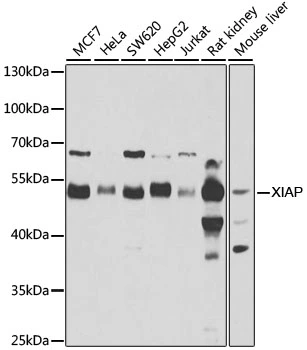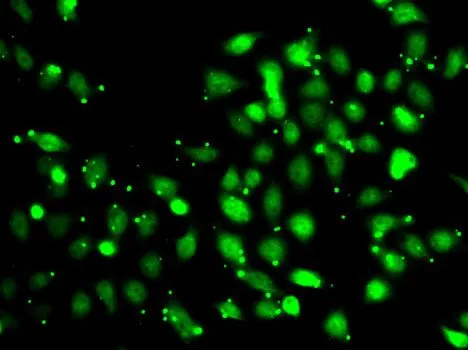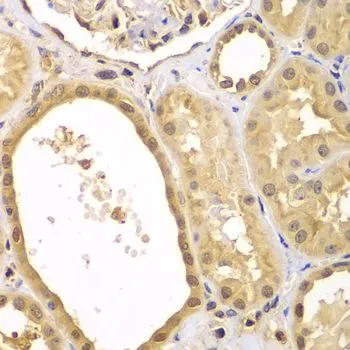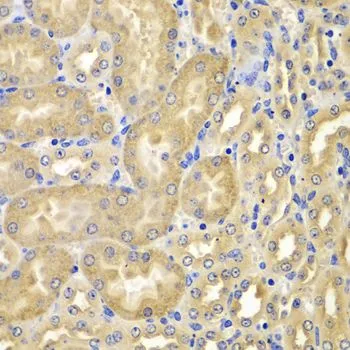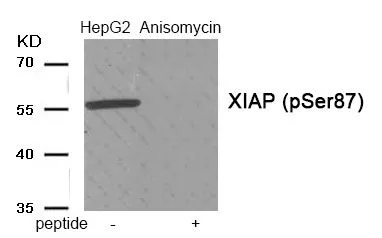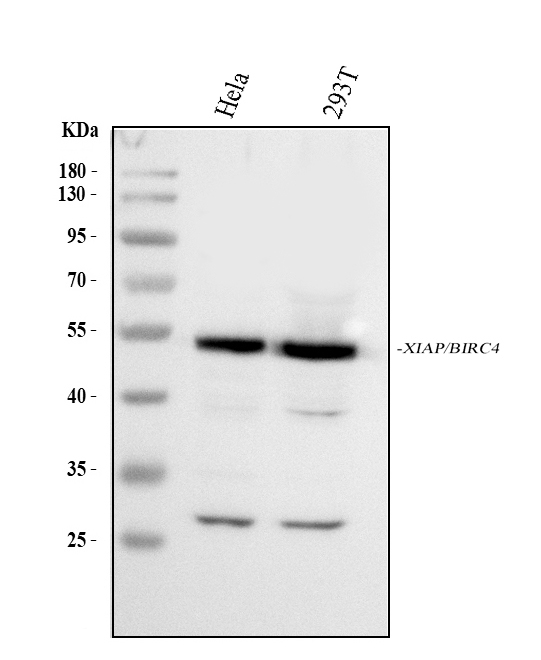
WB analysis of normal (control) and knockout (KO) HeLa cell lysate using GTX33586 XIAP antibody. Dilution : 1:1000 Loading : 25microg per lane
XIAP antibody
GTX33586
ApplicationsImmunoFluorescence, Western Blot, ImmunoCytoChemistry, ImmunoHistoChemistry, ImmunoHistoChemistry Paraffin
Product group Antibodies
TargetXIAP
Overview
- SupplierGeneTex
- Product NameXIAP antibody - KO/KD Validated
- Delivery Days Customer9
- Application Supplier NoteWB: 1:500 - 1:2000. ICC/IF: 1:50 - 1:100. IHC-P: 1:50 - 1:100. *Optimal dilutions/concentrations should be determined by the researcher.Not tested in other applications.
- ApplicationsImmunoFluorescence, Western Blot, ImmunoCytoChemistry, ImmunoHistoChemistry, ImmunoHistoChemistry Paraffin
- CertificationResearch Use Only
- ClonalityPolyclonal
- ConjugateUnconjugated
- Gene ID331
- Target nameXIAP
- Target descriptionX-linked inhibitor of apoptosis
- Target synonymsAPI3, BIRC4, IAP-3, ILP1, MIHA, XLP2, hIAP-3, hIAP3, E3 ubiquitin-protein ligase XIAP, IAP-like protein 1, RING-type E3 ubiquitin transferase XIAP, X-linked IAP, X-linked inhibitor of apoptosis, E3 ubiquitin protein ligase, baculoviral IAP repeat-containing protein 4, inhibitor of apoptosis protein 3
- HostRabbit
- IsotypeIgG
- Protein IDP98170
- Protein NameE3 ubiquitin-protein ligase XIAP
- Scientific DescriptionThis gene encodes a protein that belongs to a family of apoptotic suppressor proteins. Members of this family share a conserved motif termed, baculovirus IAP repeat, which is necessary for their anti-apoptotic function. This protein functions through binding to tumor necrosis factor receptor-associated factors TRAF1 and TRAF2 and inhibits apoptosis induced by menadione, a potent inducer of free radicals, and interleukin 1-beta converting enzyme. This protein also inhibits at least two members of the caspase family of cell-death proteases, caspase-3 and caspase-7. Mutations in this gene are the cause of X-linked lymphoproliferative syndrome. Alternate splicing results in multiple transcript variants. Pseudogenes of this gene are found on chromosomes 2 and 11.[provided by RefSeq, Feb 2011]
- Storage Instruction-20°C or -80°C,2°C to 8°C
- UNSPSC12352203

